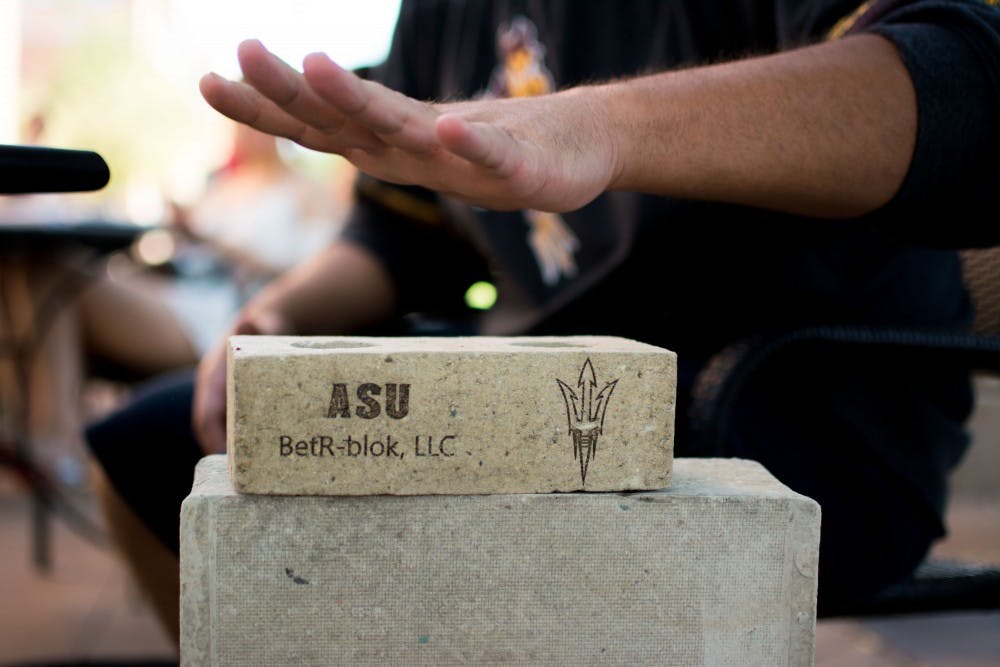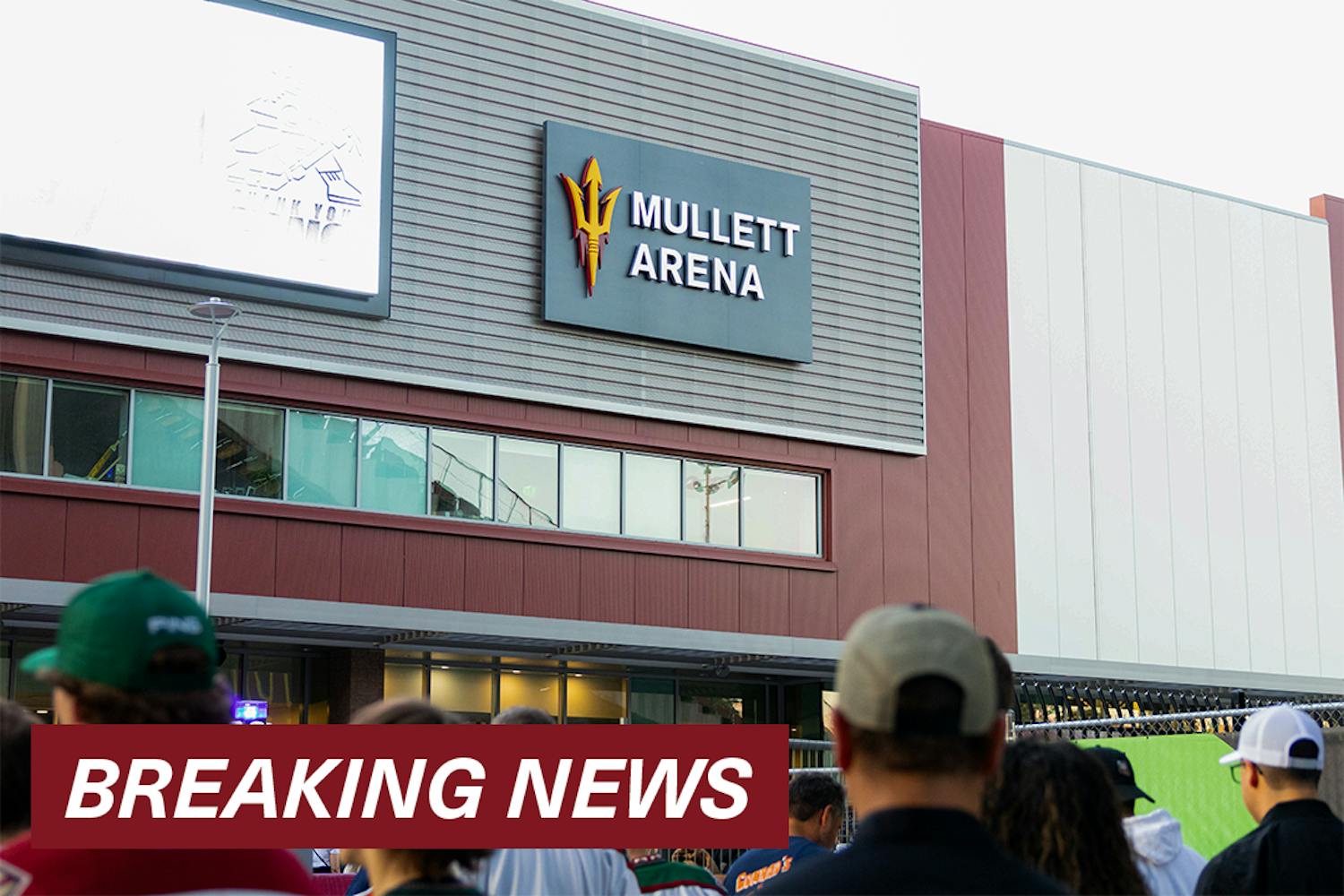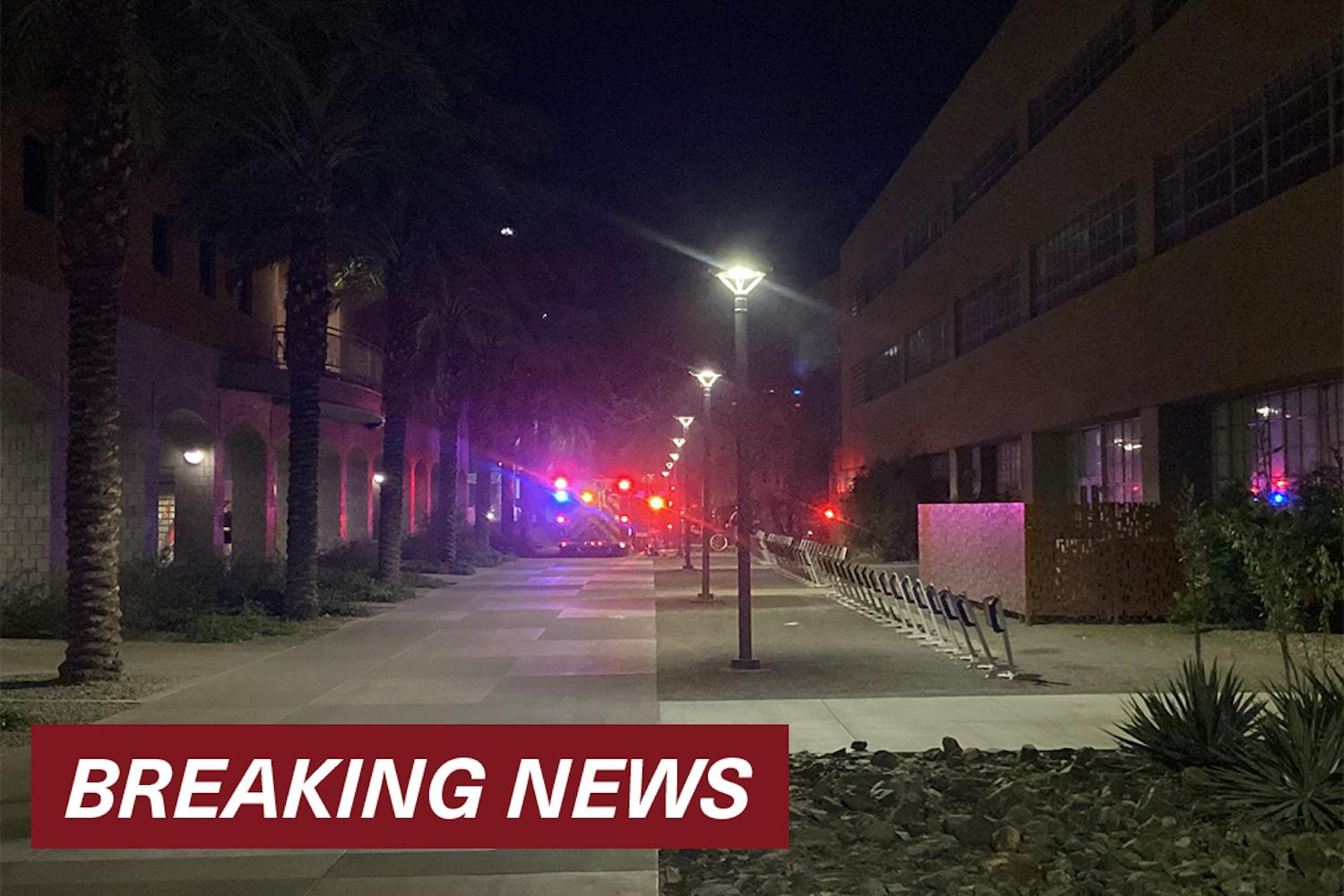Sustainability is no longer just a commodity in construction, it’s a necessity. As environmental alternatives continue to make their way into mainstream business practices, the demand for environmentally friendly alternatives is going up.
Tempe Betr-Blok, a startup company that makes building blocks out of recycled materials, seeks to address this demand in the construction realm. Made completely out of recycled paper, each block is a more environmentally friendly alternative to concrete.
To make the blocks, the materials are run through water, and about 95 percent of the water used is continually recycled to make more, said Betr-Blok cofounder and ASU sustainability senior Christopher Frettoloso.
He said the company started from the idea that building materials could be environmentally friendly.
“We started as a non-profit organization, as a do-it-yourself system,” Frettoloso said. “We were showing people how if they had a source of paper, you could build your own equipment. We still hold workshops if enough people sign up for it to show people how they can do it.”
Other than using reclaimed materials to make their building blocks, the Betr-Blok team, which has won ASU’s changemaker challenge twice, isn’t doing anything new when it comes to the technology employed.
Paper has been a building material used as long ago as ancient Rome. Frettoloso said the key difference between Betr-Blok and previous paper-based material methods is the engineering and design.
“Betr-Blok will last just as long as conventional materials,” Frettoloso said. “In general, we’re saving cost. The blocks are 100 percent recyclable.”
Compared to conventional materials, Frettoloso said his materials are more cost-efficient.
“We’re cheaper than wood construction,” he said. “Our materials are water-resistant, fire-resistant, termite-resistant and mold-resistant. Building won’t cost much more at all. You can save 12 to 15 percent compared to current building materials.”
With their design finalized and tested, the next goal for the Betr-Blok team is to increase marketing and business.
Harvey Bryan, an architecture professor focusing on sustainable architecture, said to increase business, sustainable initiatives need to inform businesses regarding the worth of an eco-friendly change, and that Betr-Blok is a prime example of such a change.
“We’re getting some really nice tools,” Bryan said in reference to the new environmental standards companies face. “We’ve got voluntary standards and regulatory standards, and there are currently national standards being developed. But you have to do what companies like Betr-Blok have done. Show that there are positive aspects of new materials — show it’s doable.”
Architect Phil Widdle, who has been involved with the creation of the new student pavilion on the Tempe campus, also said Betr-Blok displays promise in regards to the future of sustainable architecture.
"We’d actually met with them to use their materials for the pavilion,” Widdle said. “At the time, they hadn’t had the testing and capability for the project. But I hope they continue to grow. We don’t very often see products working with nearly 100 percent reclaimed materials."
Fretteloso said he is confident Betr-Blok will continue to grow and will play a key role in sustainable architecture.
“We ask ourselves ‘Where’s the future going?’” He said. “The applications are endless. This is just the starting point. It’s the tip of the iceberg.”
Reach the reporter at Emmillma@asu.edu or follow @Millmania1 on Twitter.
Like The State Press on Facebook and follow @statepress on Twitter.




